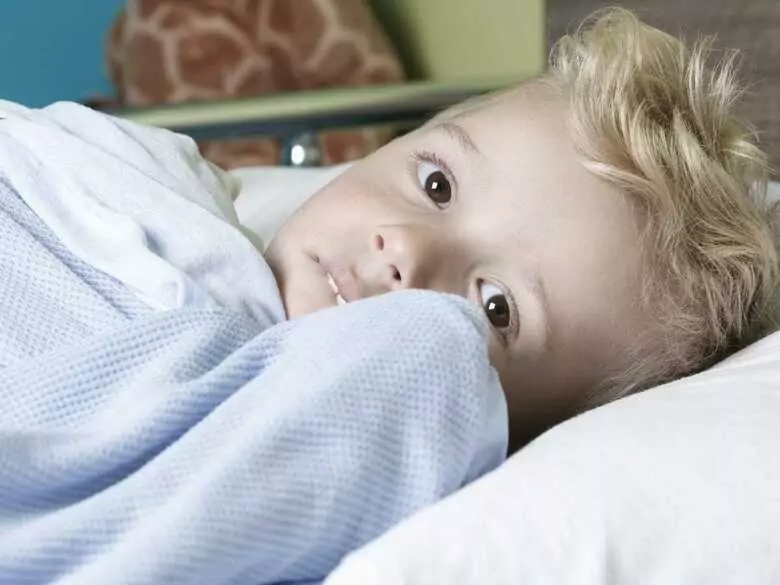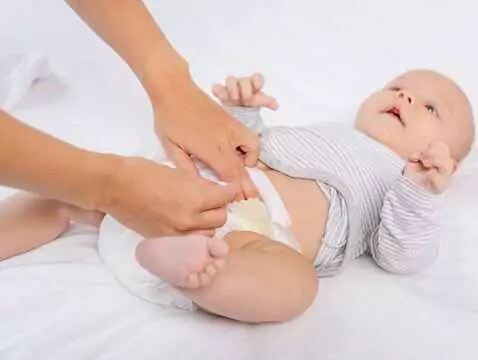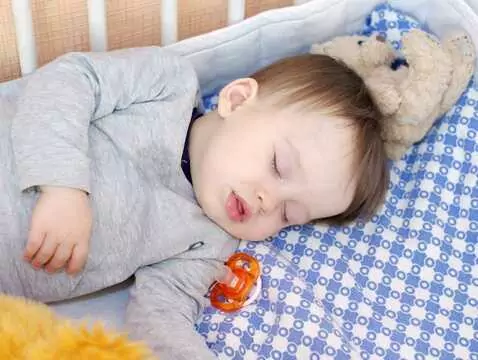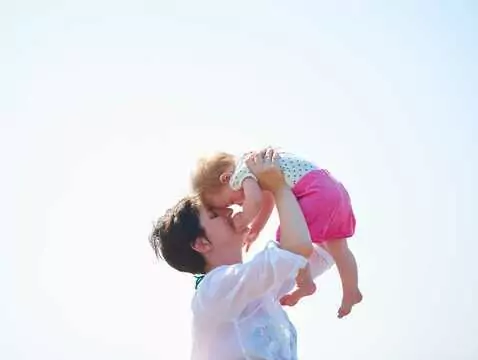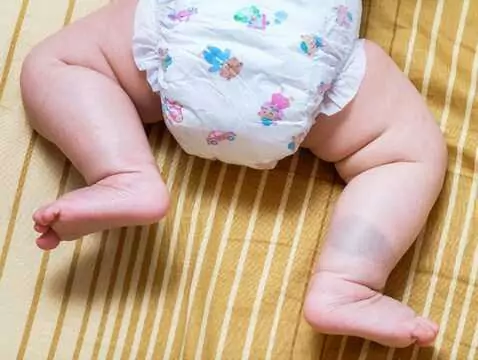The skin forms a barrier between the surrounding environment and the body's organs and systems. During the first years of life, it develops gradually and only at around 3 years of age does it become similar to adult skin. Due to its immaturity, the risk of irritation, infections and certain diseases is greatly increased. This article presents the principles of daily skin care for infants and young children and the most common skin problems occurring at this age.
The skin is one of the most important sensory organs of a small child - it houses receptors sensitive to pain, touch and temperature changes. It is through the skin that the baby discovers the world around him. The skin has an immune function - it is the "first line of defence". It protects the body from infection by bacteria, viruses and fungi, and protects it from the adverse effects of physical factors such as UV radiation, chemical factors such as cosmetics, hygiene products and toxic substances, and mechanical factors such as abrasions and injuries. It also has a thermoregulatory function, protects the body from water loss, ensures stable conditions for the body's internal environment and takes part in the synthesis of vitamin D.
The skin of a young child is not fully mature. Compared to adults, it is characterised by less thickness (it is twice as thin) and less elasticity. Other differences include a greater amount of water in the epidermis and dermis, increased transepidermal water loss, reduced amount and different composition of lipids, higher pH. Sweat glands show less activity, which, together with a relatively larger body surface area than in adults, contributes to thermoregulatory disorders.
The above-mentioned peculiarities make the child's skin more susceptible to infection, more sensitive to ultraviolet radiation and characterised by increased absorption of substances on its surface. Due to thermal instability, it is easier for a young child to overheat and cool down. During the first three years of life, the child's skin develops and becomes structurally and functionally similar to adult skin.
Infant (first year of life)
Bathing an infant is recommended 2-3 times a week. The frequency should be increased as the baby learns new skills that make him/her more dirty, such as moving and eating independently, and also on hot days when the baby sweats more.
Baby bathing is a time set aside for our little one, so it should not be done in a hurry. Before starting it, it is important to prepare the necessary things such as a towel with a hood, bathing lotion, a bath tub filled with water at a temperature of about 37-37.5 C . Do not pour too much water - it should reach the baby's hips. The air temperature in the room where the baby is being washed should ideally be between 21-22C. The optimum bathing time is a few minutes, because prolonged immersion in water means that the skin loses its natural protective layer and becomes dry, which can lead to irritation. When washing, pay attention to careful hygiene of the perineal area. In boys, gently pull back the foreskin to remove the mastoid. In the case of girls, the area between the labia should be washed thoroughly. Always remember when caring for the nappy area of girls to wash from the front towards the back (towards the buttocks). Failure to do so can result in faecal contamination of the vaginal vestibule, which can lead to urinary tract infections.
The products that should be used to wash the baby's body should be pH-neutral and free of fragrances, dyes and preservatives. In children with atopic dermatitis, emollient baths are recommended. Until the baby's head is covered with a small amount of hair, the head can be washed with the liquid used in the baby's bath. Usually it is enough to do this twice a week. After the bath, the baby's body should be very gently dried.
When dryness or peeling of the skin is noticed, it is advisable to intensively moisturise the baby's skin with emollients intended for this age group. In the case of erosions or abrasions, a barrier cream should be applied to the affected areas. The use of emollients is good practice for children with healthy skin, but becomes essential for children with skin conditions such as ichthyosis or atopic dermatitis (AD). Emollients are characterised by their oiling, moisturising and anti-itching properties. They come in the form of emulsions and bath gels, creams, lotions and hair shampoos. They are available in pharmacies. When applying moisturisers to the baby's skin, we can give the baby a relaxing massage to help him relax and prepare for sleep.
A place that is particularly sensitive and prone to complications is the nappy area. Faeces and urine irritate the skin in this area and contribute to the maceration of the epidermis. To protect the baby from nappy rash, nappies should be changed every 3-4 hours. It is best to wash the buttocks with warm water and baby gel or with gentle baby wipes. However, these should not be used for children with AD, due to the possibility of causing irritation. When hygienising the nappy area, the skin folds should be thoroughly dried to avoid irritation and chafing. It is a good idea to let the skin "breathe" and not to put on another nappy too quickly. If redness appears, it is recommended to use creams containing zinc oxide, allantoin, D-panthenol, among others. Neglecting the 'flare-up' of the skin in the nappy area can lead to the formation of wounds (erosions) and the development of bacterial infection or fungal infections. If the skin lesions worsen, a doctor should be consulted, as an antifungal drug or antibiotic may be necessary.
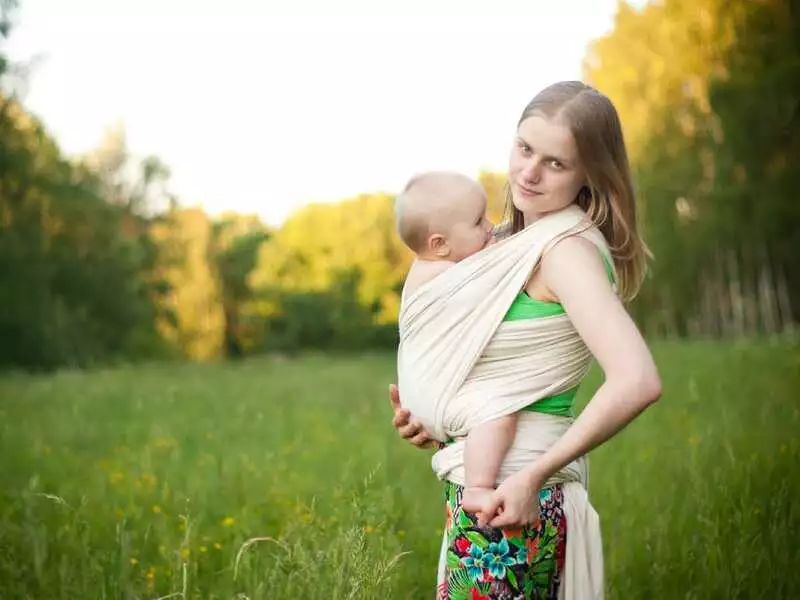
photo: shutterstock
Skin care in summer
Exposure of babies to direct sunlight should be avoided in summer because of the risk of skin cancer in the future. Redness or even sunburn can occur after just 15 minutes in direct sunlight. To protect your baby's skin from the harmful effects of the sun's rays, it is advisable to use creams with UVA and UVB filters. For children, there are products with a mineral filter that, instead of penetrating the skin, forms a layer on it reflecting the UV rays. Choose products with the highest possible factor, so that the protection they provide is the most effective. Creams with a factor of 50+ are recommended for babies. The cream should be applied before leaving home (a few minutes beforehand). Remember to apply the cosmetic quite generously. Because the product wears off when the child moves around and the sunscreen it contains breaks down under the influence of the sun's rays, the child's skin should be treated every two hours. Don't forget that some of the sun's rays reach the skin through the fabric, so it is important to apply the product to areas that are exposed to the sun as well as the parts of the body that are covered by clothing.

